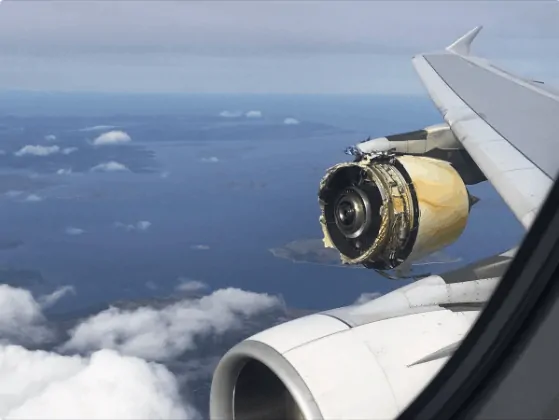Metal Fatigue in Aircraft
Laser peening has been proven to be a cruical technology in preventing metal fatigue in aircraft.
Posted: June 15, 2020
By:
What are Common Metal Fatigue Failures in Aircraft?
There are several key components on an aircraft that are susceptible to metal fatigue. Mission-critical aircraft components experience vibration, high-frequency rotation, and other forms of in-flight stress, so there is a long list of aircraft systems that can benefit from life-extending laser peening.
- Engine Components
- Fan Blades
- Wing Attachments
- Brakes/ Landing Gears
- Welded Components
- Aging Components
- Fastener Holes
Cracks due to continuous stress on these parts can cause catastrophic structural failure. Laser peening plays a strong role in both preventing cracks and inhibiting already initiated damage in many cases.
In 2018, a Piper PA-28R-201 crashed after a wing separated from the airplane. After an investigation, it was determined that metal fatigue and cracking played a major role in the crash because of the frequent landing cycles and training maneuvers. The National Transportation Safety Board (NTSB) concluded that, “Previously established inspection criteria were insufficient to detect the fatigue crack before it grew to a critical size.”

A near crash was avoided in 2017 when a turbo fan engine exploded. Luckily, the pilot was able to divert and execute a successful emergency landing. The cause of the engine explosion was due to uncontained failure, which is when fragments of rotating engine parts penetrate and exit the engine case resulting not only in operational failure, but also hazardous flying debris.
In 2016, another engine exploded when a plane began down the runway. The NTSB reported that, “A high-pressure turbine disc ruptured as American Airlines Flight 383 accelerated down the runway, launching heavy fragments and debris up to half a mile away. Pilots aborted the takeoff and 170 people evacuated the aircraft as fire consumed the right engine and wing.” The flaw was due to a subsurface defect that went unnoticed in inspections because it occurred deep under the metal surface.
The Importance of Laser Peening in the Aerospace Industry

So what technology is available to help prevent these catastrophic events in the air?
Laser peening prevents precisely this kind of catastrophic fatigue failure in aircraft components.
Maintenance inspections fail when cracks underneath the metal surface are not detected. But laser peening uniquely provides the protection of compressive residual stresses far below the metal surface for enhanced fatigue resistance and crack inhibition. Laser peening also has an advantage due to its flexibility to perform in hard-to-reach areas and hazardous environments.
Aerospace OEMs have turned to laser peening to extend the fatigue life of critical components, including fan blades and rotors in jet engines, bulkheads, wing spars, landing gears, wing lugs, arresting hooks, and other critical aerospace components.
Laser peening also saves money on maintenance and repair costs and reduces downtime so airplanes are not spending additional time in the maintenance hangars. See how laser peening saved a company an estimated $3,000,000 for extending service life of aluminum landing gear components for the T-38 Talon.
Laser peening has demonstrated its value in improving component performance, reducing costs, and reducing downtime due to maintenance, providing a critical safety and performance boost for the aerospace industry.
CONTACT US to learn more about specific applications. Our team of experts can provide you with more information.
Interested in Seeing More?
Tell us about your application, material, or failure mechanism and we will have one of our experts reach out to you. Our extensive library of research and years of experience gives us a unique advantage to apply a finite element analysis to help diagnose the best application for your situation.
